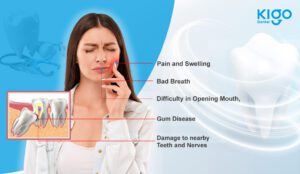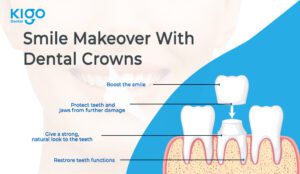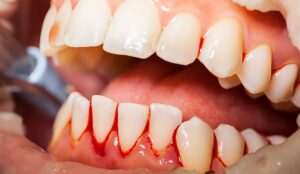Flouride Application
Uncompromised quality
We use quintessential quality materials and stringent sterilisation protocols to ensure that you don't have any medical or dental complications in future.
Anxiety Free Dentistry
Experience the treatment process in a pleasant atmosphere from handpicked expert clinicians, with unparalleled clinical etiquette, to ensure exemplary health care.
Best in class outcomes
We strive our best, so that we can keep our promise of delivering the individualized smiles that we have reimagined for you with latest techniques and technologies.
"Fluoride application: The best defense against tooth decay!"


Fluoride is a natural mineral that can be found in soil, water, and certain foods. It is well-known for its ability to strengthen tooth enamel and prevent tooth decay. Fluoride application is the process of applying a fluoride-containing solution or gel to the teeth, which helps to promote oral health and prevent dental caries.
Fluoride application can be performed in various settings, including dental offices, schools, and community health centres. The process is quick and painless, and typically takes only a few minutes to complete. The dentist or dental hygienist will first clean the teeth and remove any plaque or debris before applying the fluoride solution.
The fluoride solution is usually applied using a tray, brush, or swab. The patient will then be asked to keep the solution in their mouth for a few minutes before spitting it out. This allows the fluoride to penetrate the tooth enamel and strengthen it.
Fluoride application is particularly important for children, as their teeth are still developing and are more susceptible to tooth decay. In fact, the American Dental Association recommends that children receive fluoride treatments every six months. However, fluoride application is also beneficial for adults, as it can help to prevent cavities and maintain healthy teeth and gums.
There are several benefits to fluoride application. First and foremost, fluoride strengthens tooth enamel, which makes teeth more resistant to acid attacks that can lead to cavities. It also helps to remineralize teeth that have already been damaged by acid. Fluoride has been shown to reduce the incidence of cavities in both children and adults, and can also help to prevent the need for more extensive dental work such as fillings, crowns, and root canals.
In addition to preventing tooth decay, fluoride application can also help to improve overall oral health. It can reduce the amount of plaque on the teeth, which can help to prevent gum disease. Fluoride can also help to reduce tooth sensitivity and improve the appearance of teeth by reducing the likelihood of staining and discoloration.
In conclusion, fluoride application is a simple and effective way to maintain healthy teeth and prevent tooth decay. It is a quick and painless process that can be performed in a variety of settings, and is particularly important for children. By strengthening tooth enamel and promoting overall oral health, fluoride application can help to ensure that people of all ages have healthy, bright smiles for years to come.
Topical Fluoride Application: Topical fluoride application involves the direct application of fluoride to the surface of the teeth. This can be done in a dental office or at home. Some common methods of topical fluoride application include:
Professional fluoride treatment: This is done in a dental office and involves the use of a high concentration fluoride gel or foam. The fluoride is applied to the teeth for a few minutes and then rinsed off.
Prescription fluoride toothpaste or mouthwash: These contain higher concentrations of fluoride than over-the-counter products and are used on a daily basis.
Over-the-counter fluoride products: These include fluoride toothpaste, mouthwash, and gels that can be purchased without a prescription. They contain lower concentrations of fluoride than professional products.
Fluoride Gel Application:
- The dentist or dental hygienist will clean the teeth to remove any debris and plaque.
- The teeth are dried with air to ensure that the fluoride gel sticks to the teeth.
- A tray is then filled with fluoride gel, and the patient is instructed to bite down on the tray, which fits comfortably over the teeth.
- The tray is kept in the mouth for a specific period, typically 1 to 4 minutes, depending on the concentration of the fluoride gel.
- The patient is instructed to avoid eating or drinking for at least 30 minutes after the treatment.
Fluoride Varnish Application:
- The dentist or dental hygienist will clean the teeth to remove any debris and plaque.
- The teeth are dried with air to ensure that the fluoride varnish sticks to the teeth.
- The fluoride varnish is then painted onto the teeth using a brush.
- The patient is instructed to avoid eating or drinking for at least 30 minutes after the treatment.
Fluoride Foam Application:
- The dentist or dental hygienist will clean the teeth to remove any debris and plaque.
- A tray is then filled with fluoride foam, and the patient is instructed to bite down on the tray, which fits comfortably over the teeth.
- The tray is kept in the mouth for a specific period, typically 1 to 4 minutes, depending on the concentration of the fluoride foam.
- The patient is instructed to avoid eating or drinking for at least 30 minutes after the treatment.
Fluoride Mouth Rinse:
- The patient is instructed to fill the measuring cup that comes with the fluoride rinse with the recommended amount of fluoride rinse.
- The patient is then instructed to swish the fluoride rinse around in their mouth for 1 minute.
- The patient is then instructed to spit the fluoride rinse out, and they should not eat or drink for at least 30 minutes after the rinse.
Prevents Tooth Decay: Fluoride application strengthens the enamel on the teeth, making them more resistant to the acids that cause tooth decay. By preventing tooth decay, fluoride application can help to preserve the natural teeth and prevent the need for costly dental procedures such as fillings and extractions.
Reduces the Risk of Cavities: Fluoride application can significantly reduce the risk of cavities, particularly in children who have developing teeth. This can help to ensure that children have a healthy set of teeth that will last into adulthood.
Safe and Effective: Fluoride application is a safe and effective way to promote dental health. It is widely used and recommended by dentists and public health organizations, and the benefits have been demonstrated in numerous scientific studies.
Cost-Effective: Fluoride application is a cost-effective way to prevent tooth decay and promote dental health. It is less expensive than many other dental procedures, and it can save money in the long run by preventing the need for more extensive dental work.
Avoid eating or drinking for at least 30 minutes: To allow the fluoride to fully absorb into the teeth, patients should avoid eating or drinking anything for at least 30 minutes after the treatment.
No brushing or flossing for at least 4 hours: To allow the fluoride to continue working on the teeth, patients should avoid brushing or flossing for at least 4 hours after the treatment.
No alcohol-based mouthwash: Patients should avoid using any alcohol-based mouthwash for at least 24 hours after the treatment, as this can interfere with the effectiveness of the fluoride.
No hard or sticky foods: Patients should avoid eating hard or sticky foods for at least 24 hours after the treatment, as this can dislodge the fluoride and reduce its effectiveness.
Avoid excessive heat or cold: Patients should avoid consuming foods or drinks that are excessively hot or cold for at least 24 hours after the treatment, as this can cause tooth sensitivity.
Resume regular dental hygiene routine: Patients should resume their regular dental hygiene routine, including brushing and flossing, after the waiting period as recommended by their dentist.
Children and teenagers: Fluoride is important for developing teeth, as it helps strengthen the enamel and prevent cavities. Children and teenagers are at a higher risk for tooth decay because they may not have developed good dental hygiene habits yet or may consume sugary foods and drinks more often.
People with dry mouth: Saliva helps neutralize acid in the mouth and wash away food particles, so people with dry mouth (a condition in which the mouth does not produce enough saliva) may be at a higher risk for tooth decay. Fluoride can help protect the teeth in these cases.
People with gum recession or periodontal disease: Gum recession can expose the root surfaces of the teeth, which are more susceptible to decay. Periodontal disease can also cause tooth sensitivity and weaken the teeth. Fluoride application can help protect and strengthen these vulnerable areas.
People with braces or orthodontic appliances: Braces or orthodontic appliances can make it more difficult to clean the teeth properly, and therefore increase the risk of tooth decay. Fluoride application can help protect the teeth while the appliances are in place.
Older adults: Older adults may be more prone to tooth decay and gum disease due to age-related changes in their oral health. Fluoride application can help protect their teeth and prevent decay.
We at Kigo Dental are committed to providing you with the best dental care available, and we do so with a smile.
Our entire staff, from receptionists to dental hygienists and assistants, is committed to providing you with the best quality dental care possible.
From the time you walk through the door and every time you revisit, you will experience this firsthand.
Kigo Dental has a team of experienced and skilled Orthodontists and other specialized dentists who specialize in providing high-quality dental care and treatments, utilizing the latest technologies and techniques to ensure the best patient outcomes.
FAQ's
Fluoride can be applied to the teeth in a number of ways, including as a gel, foam, varnish, or rinse. The method used may depend on the patient’s age, oral health status, and personal preference.
Yes, children can receive fluoride treatments as long as they are old enough to follow instructions and rinse properly. The American Dental Association (ADA) recommends that children receive fluoride treatments every six months.
The frequency of fluoride treatments for adults can vary depending on their oral health status and risk for tooth decay. Your dentist can help determine the appropriate frequency of fluoride treatments for you.
Fluoride application can help prevent tooth decay, reverse early stages of tooth decay, and strengthen the enamel on your teeth.
It is recommended that you avoid eating or drinking for at least 30 minutes after receiving a fluoride treatment to allow the fluoride to fully absorb into your teeth.
Fluoride application is generally painless, but some people may experience a slight tingling or burning sensation in the mouth. If you experience any discomfort during the treatment, be sure to let your dental professional know.
Fluoride application is the process of applying a fluoride-containing product to the teeth to help prevent tooth decay.
No special preparation is required before fluoride application. You should brush your teeth before the appointment, but avoid eating or drinking anything for at least 30 minutes after the fluoride application.
The protection provided by fluoride application can last for several months, but regular applications may be needed to maintain optimal protection.
Blogs






Wisdom Teeth: Understanding the What, Why, and When
Wisdom teeth, also known as third molars, are often a source of concern for many people. They can lead to various dental issues, including wisdom






Smile Makeover with Dental Crowns: Types, Overview & cost
A smile is one of the most attractive features a person can have. It can boost your confidence, make you more approachable, and even improve






Beyond the smile: Exploring the crucial role of teeth in your overall health
Teeth are often linked to the ability to smile, eat, and express oneself. However, teeth serve many other vital purposes as well. Your teeth have






The Silent Threat: How Gum Diseases Lead to Tooth Loss
Having strong teeth and gums is a reflection of your entire well-being, not simply your appearance. Despite this, many people don’t give their gums the






The Importance of Orthodontists in Clear Aligner Treatment: Avoiding Problems and Ensuring Successful Outcomes
More and more individuals are seeking out clear aligner treatment as a way to improve their smile in a way that is both subtle and






Understanding Abnormal Dental Habits in Children and the Importance of Control
As parents and caregivers, we play a pivotal role in shaping our children’s habits and behaviors, especially when it comes to their oral health. However,






Wisdom Teeth: Understanding the What, Why, and When
Wisdom teeth, also known as third molars, are often a source of concern for many people. They can lead to various dental issues, including wisdom






Smile Makeover with Dental Crowns: Types, Overview & cost
A smile is one of the most attractive features a person can have. It can boost your confidence, make you more approachable, and even improve






Beyond the smile: Exploring the crucial role of teeth in your overall health
Teeth are often linked to the ability to smile, eat, and express oneself. However, teeth serve many other vital purposes as well. Your teeth have






The Silent Threat: How Gum Diseases Lead to Tooth Loss
Having strong teeth and gums is a reflection of your entire well-being, not simply your appearance. Despite this, many people don’t give their gums the






The Importance of Orthodontists in Clear Aligner Treatment: Avoiding Problems and Ensuring Successful Outcomes
More and more individuals are seeking out clear aligner treatment as a way to improve their smile in a way that is both subtle and






Understanding Abnormal Dental Habits in Children and the Importance of Control
As parents and caregivers, we play a pivotal role in shaping our children’s habits and behaviors, especially when it comes to their oral health. However,






Wisdom Teeth: Understanding the What, Why, and When
Wisdom teeth, also known as third molars, are often a source of concern for many people. They can lead to various dental issues, including wisdom






Smile Makeover with Dental Crowns: Types, Overview & cost
A smile is one of the most attractive features a person can have. It can boost your confidence, make you more approachable, and even improve






Beyond the smile: Exploring the crucial role of teeth in your overall health
Teeth are often linked to the ability to smile, eat, and express oneself. However, teeth serve many other vital purposes as well. Your teeth have






The Silent Threat: How Gum Diseases Lead to Tooth Loss
Having strong teeth and gums is a reflection of your entire well-being, not simply your appearance. Despite this, many people don’t give their gums the






The Importance of Orthodontists in Clear Aligner Treatment: Avoiding Problems and Ensuring Successful Outcomes
More and more individuals are seeking out clear aligner treatment as a way to improve their smile in a way that is both subtle and






Understanding Abnormal Dental Habits in Children and the Importance of Control
As parents and caregivers, we play a pivotal role in shaping our children’s habits and behaviors, especially when it comes to their oral health. However,






Wisdom Teeth: Understanding the What, Why, and When
Wisdom teeth, also known as third molars, are often a source of concern for many people. They can lead to various dental issues, including wisdom






Smile Makeover with Dental Crowns: Types, Overview & cost
A smile is one of the most attractive features a person can have. It can boost your confidence, make you more approachable, and even improve






Beyond the smile: Exploring the crucial role of teeth in your overall health
Teeth are often linked to the ability to smile, eat, and express oneself. However, teeth serve many other vital purposes as well. Your teeth have






The Silent Threat: How Gum Diseases Lead to Tooth Loss
Having strong teeth and gums is a reflection of your entire well-being, not simply your appearance. Despite this, many people don’t give their gums the






The Importance of Orthodontists in Clear Aligner Treatment: Avoiding Problems and Ensuring Successful Outcomes
More and more individuals are seeking out clear aligner treatment as a way to improve their smile in a way that is both subtle and






Understanding Abnormal Dental Habits in Children and the Importance of Control
As parents and caregivers, we play a pivotal role in shaping our children’s habits and behaviors, especially when it comes to their oral health. However,






Wisdom Teeth: Understanding the What, Why, and When
Wisdom teeth, also known as third molars, are often a source of concern for many people. They can lead to various dental issues, including wisdom






Smile Makeover with Dental Crowns: Types, Overview & cost
A smile is one of the most attractive features a person can have. It can boost your confidence, make you more approachable, and even improve






Beyond the smile: Exploring the crucial role of teeth in your overall health
Teeth are often linked to the ability to smile, eat, and express oneself. However, teeth serve many other vital purposes as well. Your teeth have






The Silent Threat: How Gum Diseases Lead to Tooth Loss
Having strong teeth and gums is a reflection of your entire well-being, not simply your appearance. Despite this, many people don’t give their gums the






The Importance of Orthodontists in Clear Aligner Treatment: Avoiding Problems and Ensuring Successful Outcomes
More and more individuals are seeking out clear aligner treatment as a way to improve their smile in a way that is both subtle and






Understanding Abnormal Dental Habits in Children and the Importance of Control
As parents and caregivers, we play a pivotal role in shaping our children’s habits and behaviors, especially when it comes to their oral health. However,
LET'S TALK
Book your Appointment
Appointment Timings: Mon-sat: 10:00 am- 8:00 pm |
Sun: 10:00 am - 1:00 pm
Contact
We would love to be a part of your Smile Reimagining Journey...
- 2nd Floor, QUBE, Plot No: 3-64/A, Kavuri Hills Rd, Jubilee Hills, Hyderabad, Telangana 500033
-
+91 9998884398
- kigodental@gmail.com
-
Mon - Sat: 10:00 am - 8:30 pm
Sun: 10:00 am - 1:00 pm